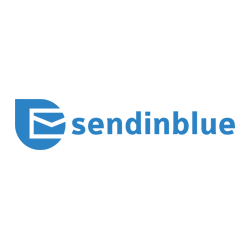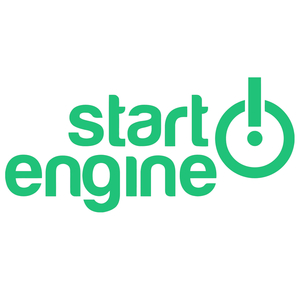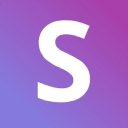
How I Started A $40K/Month AI-Powered Recruiting App
Hello! Who are you and what business did you start?
My name is Abby and I am the founder of SkillSoniq. SkillSoniq is the world’s first AI-Powered recruiting app that connects companies with skilled, domestic freelancers and gives companies the option to hire a freelancer (s) on their payroll.
Our vision is to make hiring as simple as speaking into Voice-Enabled Devices like Apple Watch, Amazon Echo, or Google Home.
We are currently operational in 5 cities across the US and Canada and will soon open up our platform to all cities across the US and Canada.

SkillSoniq is transforming the way recruiting is done by eliminating interviews, and allowing companies to work with talent on a freelance basis before converting the best ones to their payroll. This way, companies can sign up only the best workers on their payroll, thereby reducing 60%+ in hiring costs.
We currently cater to small companies with less than 200 employees, who feel the pain of hiring through traditional recruiting channels. We launched in New York in early 2019, and made $350,000+ in Gross Revenues in the first year of launch in 2019 without spending a single dime on advertising! We are currently making $40,000 a month in gross revenues. In just the first year of launch, we signed up more than 100 clients, boarded 6,000+ freelancers on our platform, and received 4.9/5.0 google review ratings from our customers.

What's your backstory and how did you come up with the idea?
I have 15 years of professional experience across Investment Banking, Tech Consulting, and Entrepreneurship and have studied in 3 continents in Asia, North America, and Europe from schools like the University of Michigan, Indian School of Business, and the London School of Economics.
I have been an entrepreneur 3 times now and founded my first company at the age of 19 to sell paint jobs to homeowners in Detroit while studying full-time at the University of Michigan’s Ross School of Business. This was my first experience as an entrepreneur and got me hooked to the hustle required to get stuff done. I followed it up with a stint in Investment Banking, which taught me the meaning of perseverance and quality testing when I worked 100+ hours a week on multi-billion dollar Financing and M&A deals.
I came across the idea of starting SkillSoniq when I was working with outsourced talent on a tech project a few years ago, where I was sitting in the United States and working with contractors in the Philippines. That experience was extremely excruciating, as I worked at odd hours to keep up with the time zone differences, had difficulty communicating with the contractors and there was a lot of concern around IP security and trust. That experience put me in major depression and when I started looking for better alternatives to hire talent in the US quickly and at affordable rates, I found that the recruiting space in the US was broken.
It takes 50+ days to hire on job portals, staffing agencies are too expensive and the existing freelance marketplaces connect companies with outsourced, low-quality talent, most of which sits outside the US in a totally different time zone.
Thus, I founded SkillSoniq, to solve my own problem of sourcing skilled talent quickly and at affordable rates. SkillSoniq is an AI-Powered recruiting app that connects companies with skilled, domestic freelancers, giving companies the option to hire a freelancer (s) on their payroll after a “trial”. SkillSoniq is quick, affordable, and convenient – Something that traditional recruitment platforms are not.
Take us through the process of designing, prototyping, and manufacturing your first product.
After conducting a lot of research for 2 years in 2016 and 2017 on what customers wanted and pain points they felt in the hiring process, we had a good sense of what customers wanted. We then hired a full-stack engineer in New York to build an MVP of our app.
We initially decided to build an app that would allow job-seekers to quickly upload their resumes and submit their profiles on SkillSoniq. Since we were building a recruiting marketplace, our goal was to first onboard a critical mass of job-seekers in New York and then approach companies to hire on our app. Hence, most of our early product features were focused around the job-seeker as opposed to companies that would hire on our platform.
From the get-go, we employed a simple, yet scalable design for our app chose a coding language that would help us ship out new features quickly, and chose product features that had “high leverage.” This way, we were able to build an app that was scalable, and adaptable to customer feedback.
We then onboarded hundreds of job-seekers in New York and started designing features for companies to hire talent on our app. Our initial matching algorithm was extremely simple, but the goal was to test the proof of concept with an initial cohort of customers and build more robust features along the way.
Once we started getting customers on board, we started to really focus on what customers wanted and drafting out a product roadmap to decide on the most wanted product features.


Describe the process of launching the business.
After onboarding a critical mass of freelancers on our app, we decided to first approach financial services companies in 2018 to help them hire skilled freelancers or so-called “consultants” through our app. After several months of trying to approach banks through phone/emails/social media networks, we were not able to sign up a single client and realized that banks had a really long sales cycle.
You should never assume that if a potential customer says they will use your product, that it will translate into a paid client.
In Q4 2018, we started approaching small companies with up to 200 employees as they also felt the pain of using traditional recruiting platforms and could have a shorter sales cycle. We realized that the best way to approach these companies was through co-working spaces, which were booming in 2018 and 2019.
We called several WeWork offices in New York and discussed our proposal to market through them. This allowed us to host marketing events for WeWork members, most of whom were small companies and startups. Thereafter, we conducted 200+ events at all the WeWork locations in New York and demoed our product to their members in person.
This worked for us, and we began to sign up our first cohort of paid clients on our platform towards the end of 2018! Keeping up with the momentum, we clocked in $350,000+ in gross revenues in 2019 and began to see huge demand from WeWork members for our recruiting app. To keep up with customer demand, expedite the shipment of new product features, and hire salespeople, we raised our first round of seed funding on Wefunder in April 2020. This round was 100% over-subscribed, and we were able to raise funds from 240 investors globally!
The biggest lessons learned along the way were that one should never give up, keep believing in the vision and think of ways to get to the customer faster, even if those channels are not scalable in the beginning.
Since launch, what has worked to attract and retain customers?
We realized that conducting events at WeWork and other co-working spaces allowed us to directly get in touch with potential clients. When members came to talk to us, we could demo the product to them instantly, build rapport and follow up after the event to sign them up on our app. That personal connection helped in converting co-working leads into customers.
For us, doing a customer demo of our product was important to explain to companies how they could hire talent on “trial” on a freelance basis and convert them to their payroll if the fit was right. At each of the co-working space events, we took down names and emails of people who came to see us and followed up after the event to set up a demo with that lead. We then found that 20% of those demos converted into a “paid customer” for us, in other words, companies that would go on to hire a freelancer (s) on our platform.
Once a customer hired a freelancer on our platform, we would constantly ping the decision-maker for feedback and propose more skills they could hire on our platform. For Example, there was an e-commerce company that hired a videographer on our platform. Once we knew they were happy with the videographer, we would encourage them to hire a producer to setup video shooting schedules and create the narrative, and perhaps a campaign manager who would create a marketing strategy around the videos produced. We found that this way, we were able to get clients to repeatedly use SkillSoniq to hire more and more talent.
While doing co-working events helped us come face to face with our customers, it was not a scalable go to market strategy. After closing our first seed round, we hired one of the best Sales Agencies in the US to help us generate qualified leads of companies and reach out to them via Phone, Email, and LinkedIn.
After iterating on various aspects of the sales outreach process, such as what leads to target, which platforms to get leads from, what content to use in emails, how many touchpoints to make to a customer, we realized that it took 7-8 touchpoints with a customer to book a demo. We also figured out that sending emails, and pinging leads on LinkedIn gave us the highest conversions in terms of Lead > Demo > Paid Client. Using this sales channel, we have been able to double the number of demos booked and now do 1 demo a day, on average.
We have been able to use this omnichannel sales outreach to launch in more cities outside of New York, such as Los Angeles, San Francisco, Boston, and Toronto, without spending a dime in Google and/or Social Media Ads!
How are you doing today and what does the future look like?
In less than 2 years, we have earned over $600,000 in gross revenues and are currently earning an average of $40,000 a month in gross revenues. Today, we have 12,000 freelancers signed up on our app across 5 cities in the US and Canada, more than 300 clients, and a gross revenue pipeline of $5M+. All this without spending a dime on Ads.
As a result, our unit economics have been extremely favorable. It costs us only $200 to acquire a paid client, who gives us $30,000 in Net Revenues over a lifetime of 6 months! Our clients have been acquired through co-working events, omnichannel sales outreach, and client referrals.
Don’t start something because it seems cool, because someone you admire is also doing it or if you simply want to “make money.” Building a successful company is almost impossible and everything is stacked up against a founder.
We are at an inflection point within SkillSoniq with proven sales channels, attractive unit economics, happy customers, rapid release of new product features, and a great deal of learning. With momentum rapidly growing around freelancing and remote work, we believe the time is right to raise our 2nd round of seed funding to achieve escape velocity and begin to form a world-class company.
We plan to raise our next round of funding soon, and grow rapidly in the future. We plan to do this by investing heavily in the sales channels that have worked for us, hiring the best talent across sales, marketing, tech, and data science, and executing rapidly on our 80+ product feature backlog. Our ultimate vision is to enable companies to hire great talent when and where they want, at highly affordable rates. A large part of this vision is to make hiring as simple as speaking into voice-enabled devices, such as Amazon Echo and Apple Watch.
Through starting the business, have you learned anything particularly helpful or advantageous?
While running SkillSoniq for the last 4 years, we have had to make a lot of tough decisions. We have failed many times, and a few of our decisions have resulted in success.
During our customer discovery sessions early on, we spoke with a lot of hiring managers at banks and were convinced that we could build a product to solve their hiring pain points – In fact, they had mentioned during these sessions that if we built what we were proposing, they would certainly use it. We were wrong in trusting them! When we built an MVP and approached those very same hiring managers, it was very hard to convince them to use our app because they already had relationships with major staffing agencies, and decision making within banks was extremely slow. The lesson learned was that one should never assume that if a potential customer says they will use your product, that it will translate into a paid client.
We initially built SkillSoniq with minimalistic design elements and with scalable features. We realized that we had to stay nimble to be able to pivot according to what the market demanded, or what we anticipated as a useful product feature. This is extremely crucial, especially if you are building a tech product. The last thing you want is to spend a ton of time building a product no one buys, and then you are struggling to change the product, losing valuable time.
For us to build a tech product, we needed to partner with an engineer. We went through multiple hires for an engineer to be able to find one that worked for us. After hiring multiple CTOs and spending a lot of time, we realized that early on, one should hire “doers” and not “managers.” This is because managers come at a huge cost, and may not be willing to roll up their sleeves to get stuff done.
We hired at least 7 different technical staff and all of them did not work out for us mainly because they were not dedicated enough to do the grunt work of coding and building a product. A key lesson was to not give up and relentlessly look for a coder who would believe in your vision, be willing to code, and be open to feedback. I have seen many “non-technical” founders give up because they could not find someone to code their vision.
In 2020, during the COVID pandemic, we lost 50% of our revenues. Many of our smaller clients went on a hiring freeze or shut down, thereby ending their contracts on SkillSoniq. This was extremely demoralizing, but we took this opportunity to double down on our product, focus on retaining existing clients by offering discounts, and strategizing for the future. We knew that if we could survive this pandemic, we would be able to grow rapidly right after, as the pandemic would ultimately provide huge tailwinds to our business. Companies are now realizing the importance of hiring flexible talent and staying nimble – Something they can do on SkillSoniq. Even workers are realizing the importance of working from home and working at their own time.
Since we were able to keep focused on our long term vision during the pandemic, we have been able to come out of the pandemic a winner, and are now lining up several projects within the company that will help us achieve our growth target for the next few years.
What platform/tools do you use for your business?
On the sales and marketing front, we use several tools such as Mailchimp, Sendinblue, and Hubspot. Mailchimp and Sendinblue have allowed us to send automated marketing emails to current and potential customers. Hubspot has allowed us to maintain a CRM of customers.
We use LinkedIn to approach potential clients with the goal of booking a demo. LinkedIn allows us to research clients that are actively hiring, and connect with them easily. Since our clients are small, we are able to directly get in touch with CXOs and Founders on LinkedIn to be able to book a demo and thereby convert them into a paid customers.
In order to generate valid emails for qualified leads, we use Snov.io. This tool allows us to generate valid emails for potential clients. Since we approach clients through email, this is an extremely important tool for us.
For product management, we use Trello and Slack. It allows us to manage our product backlog, monitors different stages of the product development lifecycle, and communicate with the engineering team effectively.
We also use Calendly and Zoom to help us book demos with clients.
What have been the most influential books, podcasts, or other resources?
I am a big fan of Reid Hoffman’s (Co-Founder of LinkedIn) podcast, Masters of Scale. Some of my favorite interviews on the podcast have been of Brian Chesky (CEO of Airbnb), Mark Zuckerberg (CEO of Facebook), and Dara Khosrowshahi (CEO of Uber). In his podcast, Reid dives deep into several issues of business and probes his interviewees to reflect on what worked for them and what didn’t. Since I can relate to a lot of issues he talks about, I am a big fan of his podcast.
One of the lessons learned from the podcast with Brian Chesky was that as a tech startup, you initially need to focus on processes that are working for you but may not necessarily scale. He mentions in the podcast that it’s important for you to first get it right, and then automate the process. We have followed this mantra to date at SkillSoniq. Where, for example, doing co-working marketing events was working for us and would not scale. However, we still organized 200+ such events knowing that we would figure out a way to use other sales channels in the future that was more scalable. Early on, it was more important for us to get client validation of our product than to find ways to scale.
Advice for other entrepreneurs who want to get started or are just starting?
One of the biggest pieces of advice I can give aspiring entrepreneurs is to start something only if you whole-heartedly and passionately believe in it. Don’t start something because it seems cool, because someone you admire is also doing it or if you simply want to “make money.” Building a successful company is almost impossible and everything is stacked up against a founder. Thus, one has to really believe in what their vision is and engage in a lot of souls searching to identify elements within their core that relate to what they are doing. Only then will you be able to survive when the going gets tough, which will happen a lot!
SkillSoniq has opened up a second round of funding and interested investors can check them out and invest here
I also speak to a lot of aspiring entrepreneurs who give up too soon because they fail to get “venture funding.” My advice would be to keep going for as long as you believe in your vision, focus on gaining clients, and find ways to bootstrap your business. This will get you focused on winning paid clients and staying lean, rather than on approaching VCs to raise funds. Once you nail your sales pipeline and win happy customers, venture funding will follow. You will also probably learn a heck lot about your business by doing the grunt work of winning clients and keeping expenses in check.
Are you looking to hire for certain positions right now?
We are looking to hire for two positions right now. We are looking for a full-time recruiter, who can help us actively and passively source more freelancers on our platform. Someone who will be able to get us a constant flow of candidates on the platform, predict demand for certain roles, and line up candidates for jobs being posted on our platform. The link for this job posting is attached here.
We are also looking for a part-time Data Scientist who is proficient in Python, R, SQL, and Ruby. The ideal candidate will help in enhancing our matching algorithms, setting data pipelines, and working on several AI-based use cases on our app. The job description can be found here.
Where can we go to learn more?
SkillSoniq has opened up a second round of funding and interested investors can check them out and invest here
You can access the SkillSoniq blog here

Download the report and join our email newsletter packed with business ideas and money-making opportunities, backed by real-life case studies.

Download the report and join our email newsletter packed with business ideas and money-making opportunities, backed by real-life case studies.

Download the report and join our email newsletter packed with business ideas and money-making opportunities, backed by real-life case studies.

Download the report and join our email newsletter packed with business ideas and money-making opportunities, backed by real-life case studies.

Download the report and join our email newsletter packed with business ideas and money-making opportunities, backed by real-life case studies.

Download the report and join our email newsletter packed with business ideas and money-making opportunities, backed by real-life case studies.

Download the report and join our email newsletter packed with business ideas and money-making opportunities, backed by real-life case studies.

Download the report and join our email newsletter packed with business ideas and money-making opportunities, backed by real-life case studies.























